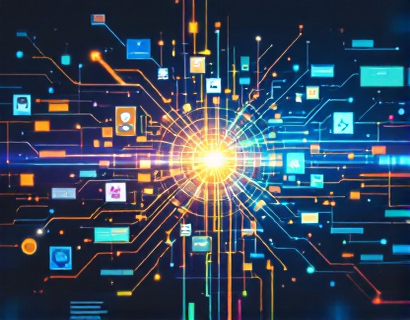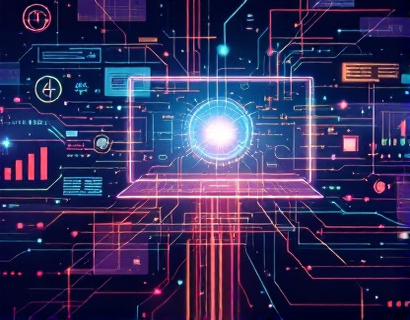Unlocking the Full Potential of ISO Emojis: A Comprehensive Guide
In the digital age, effective communication transcends mere words. Emojis have become an integral part of our online interactions, serving as a universal language that bridges gaps and enhances the emotional depth of digital conversations. The International Organization for Standardization (ISO) has played a pivotal role in standardizing these digital symbols, ensuring consistency and clarity across various platforms. This guide delves into the world of ISO standard emojis, offering a detailed exploration of how to discover, use, and copy unique variations to elevate your digital communication.
Understanding ISO Standard Emojis
ISO standard emojis are a set of universally recognized symbols designed to convey specific emotions, objects, and concepts. These emojis are crucial in a world where text-based communication often lacks the nuance of face-to-face interactions. The ISO standard ensures that regardless of the device or platform, an emoji will look and be interpreted the same way. This standardization is vital for maintaining the integrity and consistency of digital communication.
The Importance of Emojis in Digital Communication
Emojis have revolutionized the way we express ourselves online. They add a layer of emotion and context that plain text often fails to convey. In professional settings, emojis can soften the tone of a message, making it more approachable and less formal. In personal communications, they help convey complex feelings and reactions succinctly. The ability to precisely express emotions and ideas through emojis enhances the quality and effectiveness of digital interactions.
Exploring ISO Emoji Variations
ISO has defined a comprehensive set of emojis, each with specific meanings and uses. These emojis are not just limited to basic facial expressions and objects; they encompass a wide range of symbols, from food and animals to emotions and activities. Understanding the full spectrum of these symbols can significantly enrich your digital vocabulary. For instance, the difference between a smiling face with heart-eyes and a regular smiling face can convey different levels of affection and intensity.
Categories of ISO Emojis
- Emotions and Facets: These emojis represent a wide range of feelings, from happiness and love to surprise and anger.
- Food and Drink: Symbols for various cuisines and beverages, helping to communicate dietary preferences and culinary delights.
- Animals and Nature: Emojis depicting different animals, plants, and natural elements, often used to express admiration or connection to the natural world.
- Objects and Activities: Symbols for everyday objects and activities, useful for describing tasks, hobbies, and possessions.
- Symbols and Special Characters: A variety of symbols used in various contexts, from religious and spiritual to technical and scientific.
Each category offers a rich set of emojis that can be combined in countless ways to create nuanced and expressive messages. By familiarizing yourself with these categories, you can expand your digital communication toolkit and convey more complex ideas with greater precision.
Finding and Copying ISO Emojis
With the vast array of ISO emojis available, finding the exact symbol you need can sometimes be challenging. However, with the right tools and knowledge, you can efficiently locate and copy any emoji. Here’s a step-by-step guide to help you navigate this process:
First, familiarize yourself with the Unicode character set, which is the foundation for ISO emojis. Unicode provides a unique number for each emoji, making it easier to search and reference specific symbols. Websites like Unicode Consortium’s official site offer detailed information and lists of emojis.
Next, utilize online resources dedicated to ISO emojis. Platforms such as Unicode Emoji Reference provide comprehensive lists of emojis, including their Unicode codes, names, and descriptions. These resources are invaluable for finding rare or less common emojis.
Once you have identified the emoji you want to use, copying it is straightforward. On most devices, you can find the emoji keyboard or emoji picker by pressing and holding the spacebar or emoji button. Search for the specific emoji by its name or Unicode code, and once found, simply tap to select and copy it. On computers, you can use the keyboard shortcuts or emoji input tools to copy emojis.
Another efficient method is to use dedicated emoji apps or extensions that offer extensive libraries of ISO emojis. These tools often include features like quick search, categorization, and the ability to save favorite emojis for easy access. Some popular options include Emoji One and Emoji Keyboard, which are available for both mobile and desktop use.
Best Practices for Using ISO Emojis
While the flexibility of ISO emojis is a significant advantage, it’s important to use them thoughtfully to ensure your messages are clear and well-received. Here are some best practices to consider:
First, consider your audience. Different cultures and age groups may interpret emojis differently. What is a positive symbol in one context might be misunderstood in another. Researching the cultural significance of certain emojis can help avoid miscommunication.
Second, use emojis to complement, not replace, text. Over-reliance on emojis can make your messages seem unprofessional or childish, especially in formal settings. Strike a balance by using emojis to enhance your text, not overshadow it.
Third, be mindful of the context. The same emoji can convey different meanings depending on the situation. For example, a thumbs-up emoji can signify approval in one context but be offensive in another. Always consider the broader context in which you are using an emoji.
Lastly, keep your emoji usage consistent. If you’re part of a team or community, agree on a set of emojis to use for specific purposes. This consistency helps prevent confusion and ensures that your messages are understood as intended.
Enhancing Your Digital Vocabulary
Incorporating ISO emojis into your digital communication can significantly enhance your expressive capabilities. Here are some creative ways to use emojis to enrich your messages:
First, use emojis to highlight key points. For instance, in a work email, you can use a lightbulb emoji to emphasize a crucial idea or a checkmark to indicate completion of a task. This visual emphasis can draw attention to important details.
Second, create emoji-based shorthand for frequently used phrases or concepts. For example, you can use a coffee cup emoji to represent a morning meeting or a book emoji to denote a report. This shorthand can speed up your communication and make it more efficient.
Third, use emojis to add humor or light-heartedness to your messages. A laughing face emoji can break the tension in a serious conversation, while a heart emoji can express genuine appreciation. These small touches can make your digital interactions more enjoyable and human.
Fourth, experiment with combining multiple emojis to create compound meanings. For example, pairing a sun emoji with a beach emoji can convey a relaxing vacation, while a clock and a coffee emoji might suggest a busy morning routine. The possibilities are endless, and the more creative you are, the more expressive your messages can become.
Tools and Resources for Emoji Enthusiasts
For those who are passionate about emojis and want to deepen their knowledge and skills, several tools and resources are available:
First, Unicode Emoji Reference is an extensive online database that provides detailed information about each emoji, including its Unicode code, name, and description. This resource is invaluable for learning about the technical aspects of emojis and discovering lesser-known symbols.
Second, Emoji One and Emoji Kit are popular emoji apps that offer large libraries of ISO emojis, along with features like customization and quick access. These apps are particularly useful for users who frequently switch between devices or need to access a wide range of emojis on the go.
Third, online communities and forums dedicated to emojis can be great places to connect with like-minded individuals. Platforms like Reddit’s r/emoji offer a space to share tips, ask questions, and discover new emoji trends and usages.
Lastly, consider following emoji designers and artists on social media. These creatives often share insights into the design process and introduce unique, experimental emojis that push the boundaries of digital expression.
Conclusion
ISO standard emojis are more than just digital symbols; they are a powerful tool for enhancing communication in the digital age. By understanding the full range of available emojis, using them thoughtfully, and leveraging the right tools, you can significantly improve the clarity and impact of your online interactions. Whether you’re a digital communication enthusiast or a professional looking to refine your digital presence, mastering the use of ISO emojis is a valuable skill that can open up new possibilities for expression and connection.









































